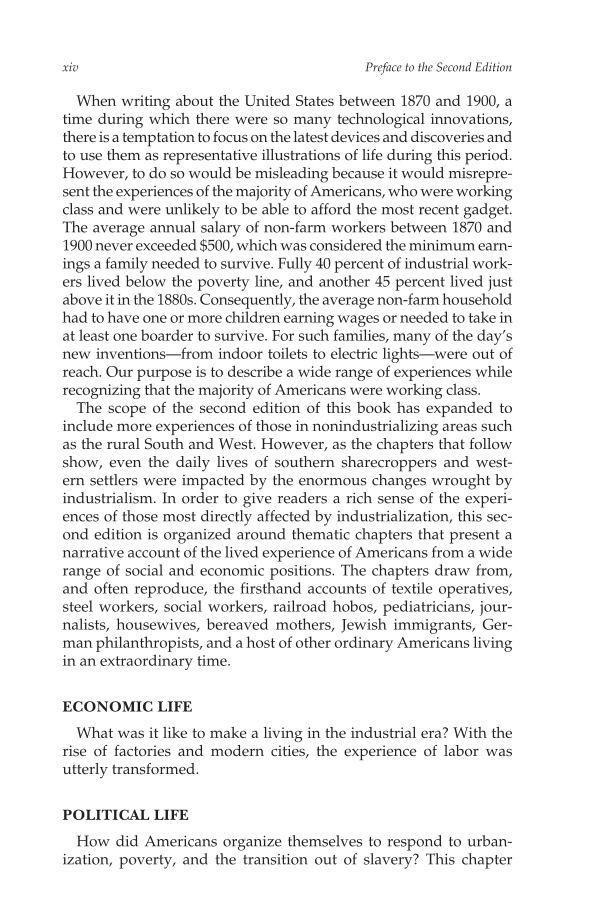xiv Preface to the Second Edition When writing about the United States between 1870 and 1900, a time during which there were so many technological innovations, there is a temptation to focus on the latest devices and discoveries and to use them as representative illustrations of life during this period. However, to do so would be misleading because it would misrepre- sent the experiences of the majority of Americans, who were working class and were unlikely to be able to afford the most recent gadget. The average annual salary of non-farm workers between 1870 and 1900 never exceeded $500, which was considered the minimum earn- ings a family needed to survive. Fully 40 percent of industrial work- ers lived below the poverty line, and another 45 percent lived just above it in the 1880s. Consequently, the average non-farm household had to have one or more children earning wages or needed to take in at least one boarder to survive. For such families, many of the day’s new inventions—from indoor toilets to electric lights—were out of reach. Our purpose is to describe a wide range of experiences while recognizing that the majority of Americans were working class. The scope of the second edition of this book has expanded to include more experiences of those in nonindustrializing areas such as the rural South and West. However, as the chapters that follow show, even the daily lives of southern sharecroppers and west- ern settlers were impacted by the enormous changes wrought by industrialism. In order to give readers a rich sense of the experi- ences of those most directly affected by industrialization, this sec- ond edition is organized around thematic chapters that present a narrative account of the lived experience of Americans from a wide range of social and economic positions. The chapters draw from, and often reproduce, the firsthand accounts of textile operatives, steel workers, social workers, railroad hobos, pediatricians, jour- nalists, housewives, bereaved mothers, Jewish immigrants, Ger- man philanthropists, and a host of other ordinary Americans living in an extraordinary time. ECONOMIC LIFE What was it like to make a living in the industrial era? With the rise of factories and modern cities, the experience of labor was utterly transformed. POLITICAL LIFE How did Americans organize themselves to respond to urban- ization, poverty, and the transition out of slavery? This chapter
Document Details My Account Print multiple pages
Print
You have printed 0 times in the last 24 hours.
Your print count will reset on at .
You may print 0 more time(s) before then.
You may print a maximum of 0 pages at a time.


































































































































































































































































































































